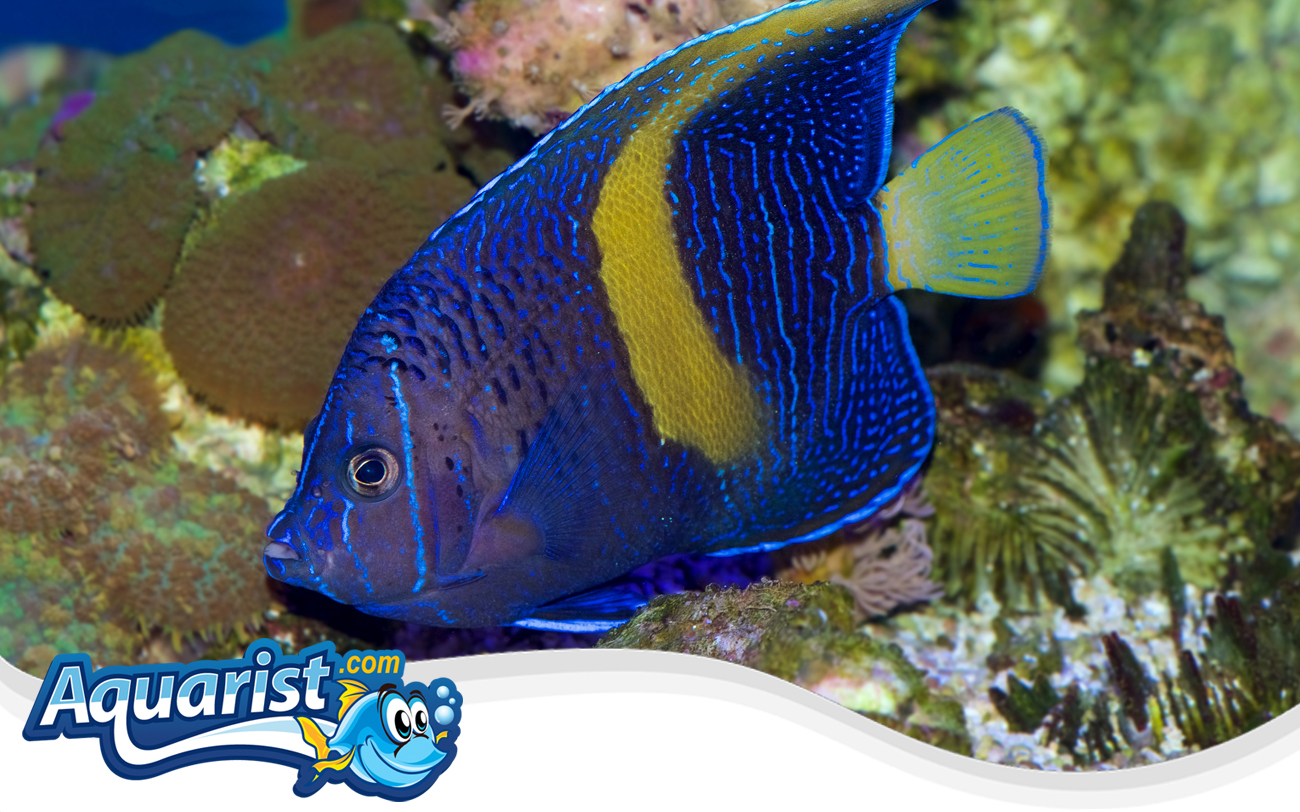Overview
- Native to the Red Sea, Persian Gulf, and northwestern Indian Ocean, typically found around coral reefs and rocky outcrops.
- Distinguished by its deep blue body, vibrant yellow vertical bar in the center, and blue-margined fins and tail.
- Juveniles display black bodies with vertical blue and white stripes that transition as they mature.
- Noted for its bold personality and territorial behavior in aquarium settings.
Feeding
- Omnivorous diet; naturally feeds on algae, sponges, tunicates, and various invertebrates.
- Readily accepts a variety of aquarium foods including angelfish diets, marine algae, frozen shrimp, mysis shrimp, brine shrimp, and chopped seafood.
- Multiple feedings per day recommended to maintain health and vibrant coloration.
- Dietary supplements containing algae and sponge are crucial for optimal nutrition.
Habitat
- Requires a spacious aquarium (minimum 180 gallons) with ample swimming space and structured live rock formations.
- Stable, mature aquarium environment is vital for their long-term health.
- Ample hiding spots and territorial areas within the live rock structure recommended.
- Strong filtration and moderate water circulation help maintain ideal water quality.
Fish Care
- Optimal water temperature: 74-80°F (23-27°C).
- Recommended pH: 8.1-8.4, specific gravity: 1.020-1.025.
- Sensitive to poor water quality; routine testing and regular water changes essential.
- Susceptible to marine parasites; consistent monitoring and prompt treatment important.
Compatibility
- Semi-aggressive temperament; best kept with similarly sized and temperament-compatible fish.
- Can be territorial, particularly towards other angelfish or similar-shaped species.
- Generally not reef-safe; prone to nip at corals, sponges, and ornamental invertebrates.
- Ideal tank mates include large tangs, groupers, wrasses, and other semi-aggressive marine species.
Aquarium Behavior
- Active, bold swimmers often seen exploring and patrolling their territory.
- Juveniles are initially shy, becoming increasingly assertive and visible as adults.
- Known to interact positively with caretakers, especially during feeding times.
- Providing adequate hiding spaces and environmental enrichment reduces aggression and stress.


